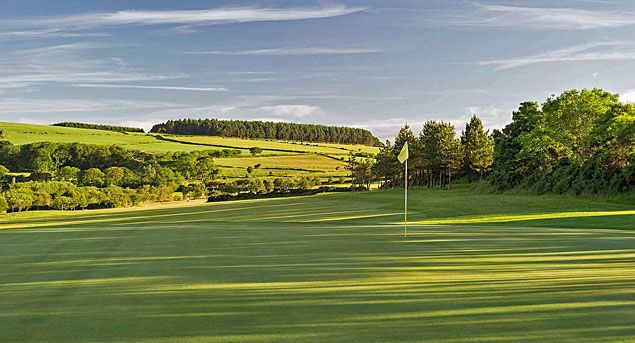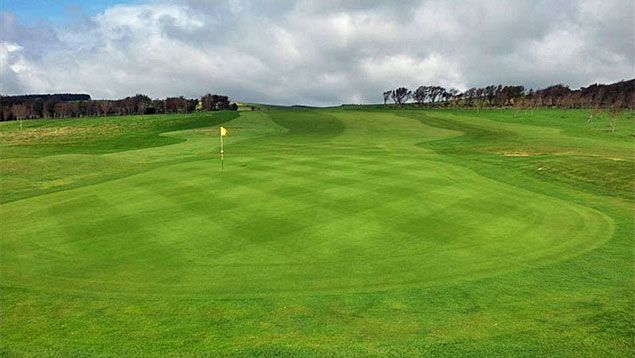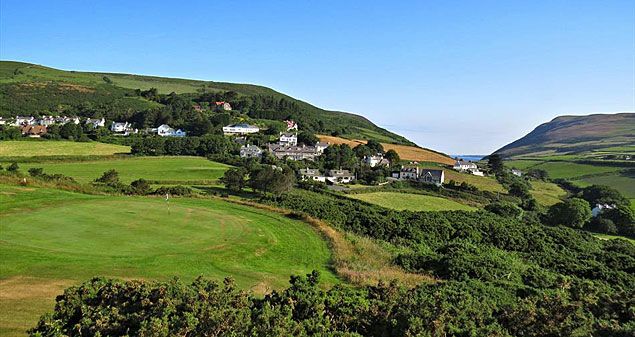- News
- There's more to the Isle of Man than just the TT races
There's more to the Isle of Man than just the TT races

There’s more to the Isle of Man than just the TT races…
On the sports front, the Isle of Man is internationally recognised as a world-class destination for motorbike enthusiasts through the Tourist Trophy time-trial races that take place every year on a 38-mile mountain course on the island. The Circuit of Mann, an all-terrain rally challenge over forest trails, mountain tracks and parts of the TT circuit, is also held here.
Away from the roads, other big sporting occasions include the International Festival of Darts and the Crown Green Bowling Festival – both of these tournaments have become permanent fixtures in the island’s events calendar. What’s maybe not so well known is that the Isle of Man is also totally geared up to attract visiting golfers to all of its eight golf courses, every one of which is open for fifty-two weeks of the year.
Last month, we accepted an invitation from the island’s tourism authority (www.visitisleofman.com) to visit these golf facilities and find out for ourselves what golfers will discover after taking the ferry over to Douglas or a flight into Castletown. On checking the Isle of Man Golf website before departure, we were pleasantly surprised to learn that seven Manx courses were 18-hole layouts, with only one 9-holer in operation.
What’s more, nearly all of the golf clubs have been in existence for well over a hundred years – and renowned architects such as Old Tom Morris, James Braid and Alistair MacKenzie have all played a significant role in their development – so there’s a very strong golfing tradition on the Isle of Man that has stood the test of time since the beginning of the 1890s.
Where better to start a golfing tour of the island than on the links at Castletown, situated right next to the airport? The club was founded in 1892 and Old Tom Morris is credited with the design of the course shortly thereafter. Philip Mackenzie Ross carried out modifications after World War II and a few of the holes have been re-sequenced in more recent years.

The links is laid out on Langness Peninsula, a Site of Special Scientific Interest which is more commonly known as Fort Island, and it’s bounded on three sides by the Irish Sea, with many of the holes played well above sea level, affording sweeping views from the tight-knit, quick-draining fairways across the cliffs, rock outcrops and surrounding seascape.

There are a number of truly memorable holes at Castletown. The tough “Road” hole at the 5th is a beast of a par four, as is the “Hog’s Back” 9th with its convex fairway. On the inward half, the 133-yard 13th is a lovely little par three and the drive at “Gully” from the 17th tee brings the cliffs right into play. However, all of these wonderful holes might soon be eclipsed by the new 18th, as it now mandates an intimidating approach over a rocky inlet to the home green.
It’s a real pity the adjacent hotel stands derelict. If only an agreement could be reached with the owners to restore it to its former glory because it would be such a tourist asset to the whole island, helping the local economy in much the same way that the Machrie Hotel now does on the island of Islay in Scotland.
The course at Douglas Golf Club is a municipal golf facility that was designed by Alister MacKenzie and built by the British Golf Construction Company, opening for play on 8th August 1927. Known locally as Pulrose, the club was established in 1946 following the merger of Douglas Golf Club with Pulrose Golf Club and the course is operated by Douglas Borough Council from the Meadow Pavilion, a community-based building that opened ten years ago.

Measuring a modest 5,836 yards from the back tees and playing to a par of 69, the course is routed over rolling terrain on the periphery of the capital, featuring five par threes and only two par fives. Although many changes have been made since the course was first unveiled, a handful of the original MacKenzie greensites remain intact.

It’s just a shame that the introduction of modern grass cutting machinery and the installation of sprinkler heads immediately next to putting surfaces has led to greens shrinking substantially, negating the architect’s original intent of allowing golfers a far wider range of putting options from tightly mown grass around the pin positions.
Three miles to the north of Douglas, on what was formerly the Howstrake Estate, Old Tom Morris laid out a 9-hole course in 1892. Two years later, Old Tom and George Lowe, the Lytham & St Annes professional, expanded the layout to eighteen holes. Sad to say, that original course is long gone.

In the 1920s, a new 18-hole set-up was created when additional land became available to increase the acreage available for golf. In the early 1970s, the course closed before re-opening a couple of years later over a revised site consisting of 14 holes on a 55-acre site.
New owners changed the club’s name to King Edward Bay Golf Club in 1989 and eighteen holes were brought into play in 1991. Today, the course measures a mere 5,231 yards from the tips, with six par threes and only one par five on the card but a standard scratch score of 68 versus a par of 67 tells you these eighteen holes are no pushover.

That’s because it’s set out on top of a headland, where sheep and goats were probably the only living things to ever venture here before golfers. The front nine rises up then drops down from this big hill, but the back nine goes back up then skirts around the outside of the promontory, offering a thrilling roller coaster ride between the 11th and 16th, with sensational views over Douglas Bay.
The Comis Mount Murray resort lies just off the A5 main road between Douglas and Castletown. Dewar Wishart from Bingley Sports Turf Research, which is now known as STRI, designed the course. The hotel changed hands in 2016 and the new owner has already heavily invested in development plans for the entire property.

The hotel has been totally refurbished, the clubhouse is currently being revamped and a new 10-bay driving range will replace the old two-storey set-up. Out on the course, it’s intended to eliminate the long walks between some of the holes and this will be greatly assisted by the introduction of a tunnel under the road that passes through the property.

Mount Murray now measures 6,356 yards from the back markers, with par set at 71, and the current course configuration reflects several changes made to the routing since it debuted back in the early 1990s. There’s no doubt a reputable architect – mention has been made of Scott Macpherson who designed the courses at Close House in Northumberland – could make a significant impact on the future of this currently under achieving layout.
The fishing port of Peel lies on the west coast of the island, only a 20-minute drive from Castletown, and it’s here that the Huddersfield Golf Club professional Sandy Herd fashioned a 12-hole course for the members soon after the club’s formation in 1895.

It’s unknown who extended the layout to an 18-hole course (or when this happened) but James Braid is credited with designing the course that’s in play today, following a visit he made to the Isle of Man the year before Peel hosted the Manx Championship in 1930.
Laid out on higher ground to the north of the River Neb, the course gets off to a quiet start on the opening couple of holes before blossoming into a wonderful moorland-style track that really picks up in pace in the stretch between the 7th and the 12th, in particular.

The quality of these holes around the turn is underlined by the beautifully bunkered Biarritz green at the short par four 9th and the long, right to left sloping lie-of-the-land putting surface on the tough par four 11th – two holes that will not be forgotten in a hurry.
The 9-hole course at Port St Mary overlooks the little fishing village of the same name in the southwest corner of the island and golf has been played in this spot since 1903, though the present course is a 1936 design from yet another Open Champion from Scotland, George Duncan. With only two long par threes on the scorecard, it extends to just less than 2,900 yards.

For those who prefer their golf to be simple and straightforward then Port St Mary fits the bill – except that it involves a steep climb to the top of a hill looking down over Perwick Bay, Port St Mary and Bay Ny Carrickey. Of course, what goes up must come down, and after soaking in the surroundings from the elevated tee position on the par three 6th, golfers are then able to free wheel back down to sea level and the comfort of the clubhouse.
Located in the north of the island, Ramsey Golf Club began as a 12-hole course designed by Old Tom Morris in 1891, with the first official competition played on 5th January the following year. By the time James Braid visited to redesign the layout in 1929, the course had been increased in size to eighteen holes.

These days, the course weighs in at just a touch short of 6,000 yards from the championship tees, starting with a par five and finishing, rather unusually, with consecutive par threes. It’s the closest the island has to a pure parkland track and there’s good use made of a burn that flows through the property on some of the early holes.

Unfortunately, a lot of the holes occupy flat ground, which makes for easy walking but doesn’t help with visual stimulation – though there’s an attempt to liven things up on the par five 11th with a hedge cutting across the fairway as it doglegs to the green. Although fairways are tree-lined, it never feels too constricting, and the greenside bunkering is of a generally high standard throughout.
Rowany sits above the seaside village of Port Erin in the southwest corner of the island and the club dates back to 1895, when George Lowe established a basic 9-hole track that was doubled in size a decade later by W.J. Leaver, the Wisley professional. More than a hundred years have passed since then but not much has changed here during that time, with many of the greens still cut as old-fashioned rectangular putting surfaces.

The early holes run up and down in parallel from the 2nd to the 7th, highlighted by the par five 5th which plays up and over the top of the hill to a blind green beyond. On the back nine, a couple of terrific par fours at the 12th and 14th wouldn’t look out of place on any of the highly ranked courses on the mainland.

The club almost folded a few years ago so it’s great to see it making such a spirited comeback. And, just like the golfing experience at Boat of Garten in the Scottish Highlands, it’s such an inspiration while out on the course to hear the occasional whistle of the steam train on the Isle of Man Railway as it passes nearby on its way to and from Douglas.
Glen Truan
During our short visit to the Isle of Man, we heard of an ongoing golf project at Glen Truan in the far north of the island, on a property that is apparently pure sand. If a big-name architect such as Tom Doak, Gil Hanse or Bill Coore could be tempted into designing a properly shaped links on this site, then this would surely rocket the Isle of Man onto the world golfing stage. You only need to look at the remote King Island in Tasmania where two new seaside courses were recently built, turning the island into a red hot golfing destination.

For now, the Isle of Man is still well worth a trip to play the various golfing venues on the island. Perhaps in time the golfing powers that be might even arrange a week-long golf festival to rival all the other sporting festivals on the island, enticing golfers to participate in a competition spread over a number of different clubs. Food for thought maybe…
Thanks
Thanks to the following for their help in making this fact-finding golf trip happen:
Laura Dalton at Visit Isle of Man, Jed Power at Isle of Man Golf Holidays, Johnny Evans in Castletown, Seamus Byrne in Mount Murray, Phil Hassel in Peel, Niall Keenan and Gordon Pairman from Isle of Man Golf.
Jim McCann
Editor
Top 100 Golf Courses